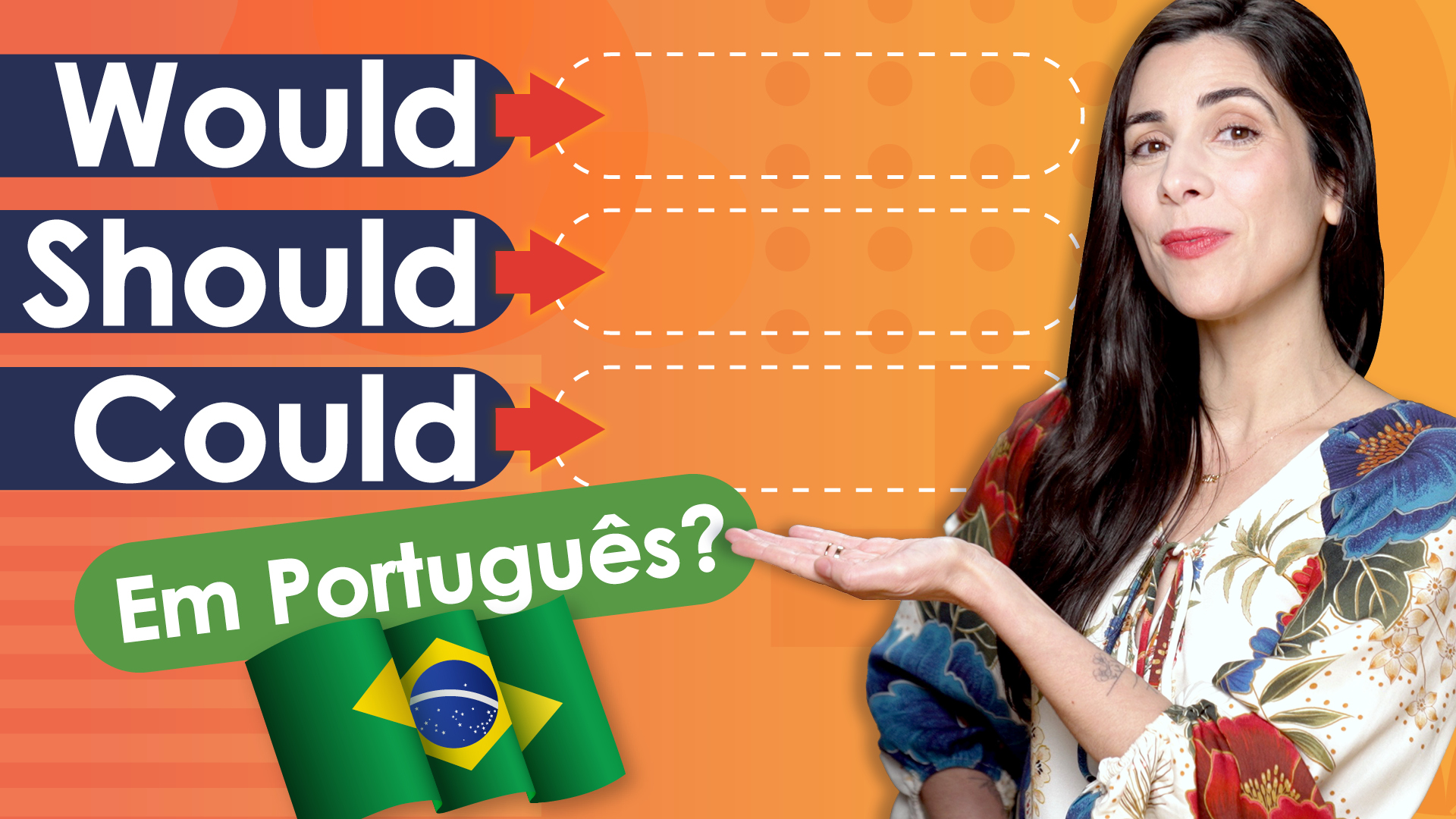Transcription of the video:
*Read the version in Portuguese at the end 🙂
Hello! I’m Virginia. Thank you for watching Speaking Brazilian!
In today’s vídeo, we’ll talk about the differences between the verbs ser and estar, the two most important verbs of the Portuguese language.
For those who speak Spanish, it is very easy to understand the use of the verbs ser and estar, since the same verbs exist in the Spanish language. But when we translate ser or estar into English, we have only one translation, which is the verb to be. The same goes for French. We have only one verb to express the meaning of ser and estar, which is the verb être.
I have a tip to help you identify when to use the verb ser and when to use the verb estar. It is very simple: the verb ser is used to speak of more permanent or long-lasting aspects, whereas the verb estar is used to speak of more temporary states. This tip doesn’t work in all cases, but it works in most of them.
The verb ser, for example, is used to say your name, family name, profession, occupation, nationality, marital status, among other things.
Let’s see some examples:
Eu sou casada. I’m married.
Ela é inteligente. She is smart.
Nós somos professores. We are teachers.
Eles são brasileiros. They are Brazilians.
Note that both profession and marital status are things that may change eventually, but since we consider them to be long-lasting attributes, we use the verb ser and not the verb estar.
The verb estar is used to speak of temporary conditions, such as emotions, health state and location.
Let’s see some examples:
Eu estou em casa. I am at home.
Ela está doente. She is sick.
Nós estamos cansados. We’re tired.
Eles estão felizes. They are happy.
Note that sometimes we can use both the verb ser and estar with some adjectives, but the meaning changes according to the verb being used. For example:
Maria é bonita. Maria is pretty.
In this case, the verb ser suggests that Maria is a person who is always pretty.
On the other hand, I can also say:
Maria está bonita hoje. Maria is pretty today.
In this case, the verb estar suggests that Maria is pretty today for some special reason.
If you want to hear how these words are pronounced and also practice your pronunciation, watch the video or listen to the podcast located at the end of this text.
Let’s see some other examples:
(* s.=singular/ p.=plural/ f.=feminine/ m.=masculine).
Eu sou professora. I am a teacher.
Você é estudante. You (s.) are a student.
Ela é americana. She is American.
Ele é brasileiro. He is Brazilian.
Nós somos vegetarianos. We are vegetarians.
Vocês são solteiros. You (p.) are single.
Elas são casadas. They (f.) are married.
Eles são bonitos. They (m.) are handsome.
Eu estou em casa. I am at home.
Você está no brasil. You (s.) are in Brazil.
Ela está com sede. She is thirsty.
Ele está com fome. He is hungry.
Nós estamos cansados. We are tired.
Vocês estão animados. You (p.) are excited.
Elas estão felizes. They (f.) are happy.
Eles estão tristes. They (m.) are sad.
Very well!
Watch this video at least two more times to assimilate the content and practice your pronunciation.
If you liked it, follow my channel! Every week I post a new video with tips on grammar, expressions and pronunciation of the Brazilian Portuguese.
And speaking of pronunciation, I offer a free mini-course on pronunciation. To subscribe, visit my website: speakingbrazilian.com.
Thank you for watching this video and see you next time!
Bye-bye!
Virginia (your teacher)
As Diferenças Entre os Verbos Ser e Estar
Olá! Eu sou a Virginia. Obrigada por assistir ao Speaking Brazilian!
No vídeo de hoje, vamos falar sobre as diferenças entre os verbos ser e estar: os dois verbos mais importantes da língua portuguesa.
Para aqueles que falam espanhol, é muito fácil entender o uso dos verbos ser e estar, pois os mesmos verbos existem na língua espanhola. Mas quando traduzimos ser ou estar para o inglês, temos apenas uma tradução, que é o verbo to be. O mesmo acontece com o francês. Temos apenas um verbo para expressar ser e estar, que é o verbo être.
Eu tenho uma dica para ajudá-lo a saber quando usar o verbo ser e quando usar o verbo estar. É muito simples: o verbo ser é usado para falar de aspectos mais permanentes ou duradouros, enquanto que o verbo estar é usado para falar de estados mais temporários. Esta dica não funciona em todos casos, mas funciona quase sempre.
O verbo ser, por exemplo, é usado para falar o seu nome, sobrenome, profissão, ocupação, nacionalidade, estado civil, entre outras coisas.
Vamos ver alguns exemplos:
Eu sou casada.
Ela é inteligente.
Nós somos professores.
Eles são brasileiros.
Note que tanto profissão quando estado civil são coisas que podem mudar eventualmente, mas como consideramos que são atributos duradouros, usamos o verbo ser e não o verbo estar.
O verbo estar é usado para falar de condições temporárias, como emoções, estados de saúde e localização.
Vamos ver alguns exemplos:
Eu estou em casa.
Ela está doente.
Nós estamos cansados.
Eles estão felizes.
Note que algumas vezes, podemos usar tanto o verbo ser quando o estar com alguns adjetivos, mas o significado muda de acordo com o verbo usado. Por exemplo:
Maria é bonita.
Neste caso, o verbo ser sugere que Maria é uma pessoa sempre bonita.
Por outro lado, eu também posso dizer:
Maria está bonita hoje.
Neste caso, o verbo estar sugere que Maria está bonita hoje por alguma razão especial.
Vamos ver mais exemplos:
Eu sou professora.
Você é estudante.
Ela é americana.
Ele é brasileiro.
Nós somos vegetarianos.
Vocês são solteiros.
Elas são casadas.
Eles são bonitos.
Eu estou em casa.
Você está no brasil.
Ela está com sede.
Ele está com fome.
Nós estamos cansados.
Vocês estão animados.
Elas estão felizes.
Eles estão tristes.
Muito bem!
Assista a este vídeo pelo menos mais duas vezes para assimilar o conteúdo e praticar a sua pronúncia.
Se gostou, siga o meu canal! Todas as semanas eu posto um novo vídeo com dicas de gramática, expressões e pronúncia do português brasileiro.
E falando em pronúncia, eu ofereço um minicurso de pronúncia gratuito. Para se inscrever, visite o meu site: speakingbrazilian.com.
Obrigada por assistir a este vídeo e até a próxima!
Tchau, tchau!
Virginia (sua professora)


